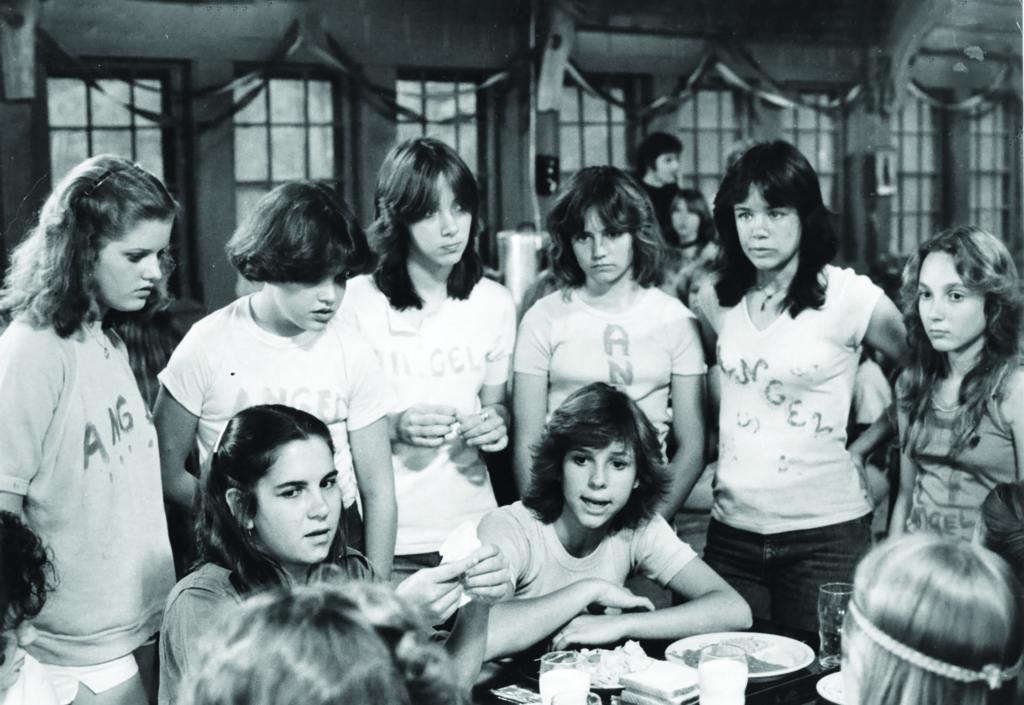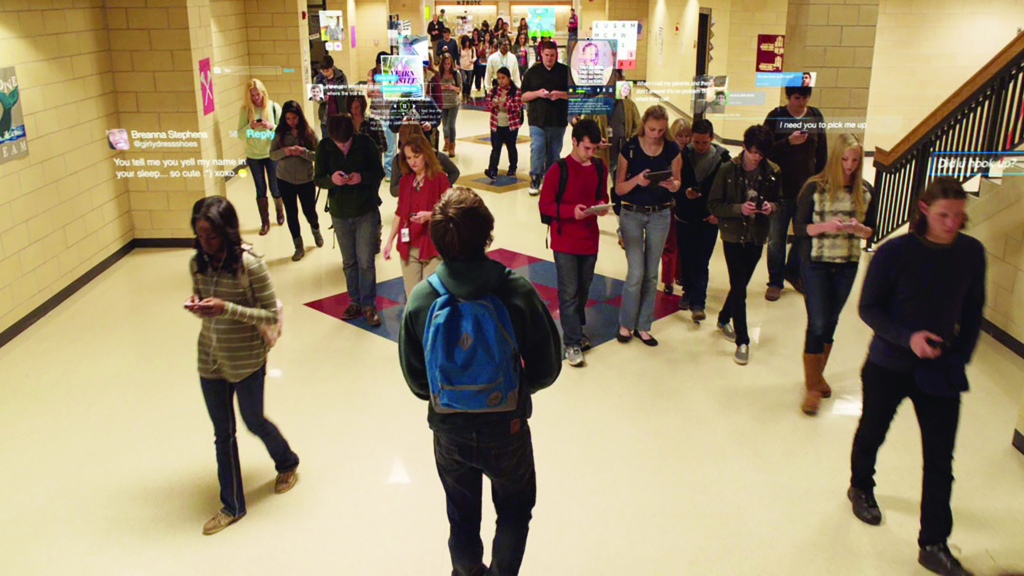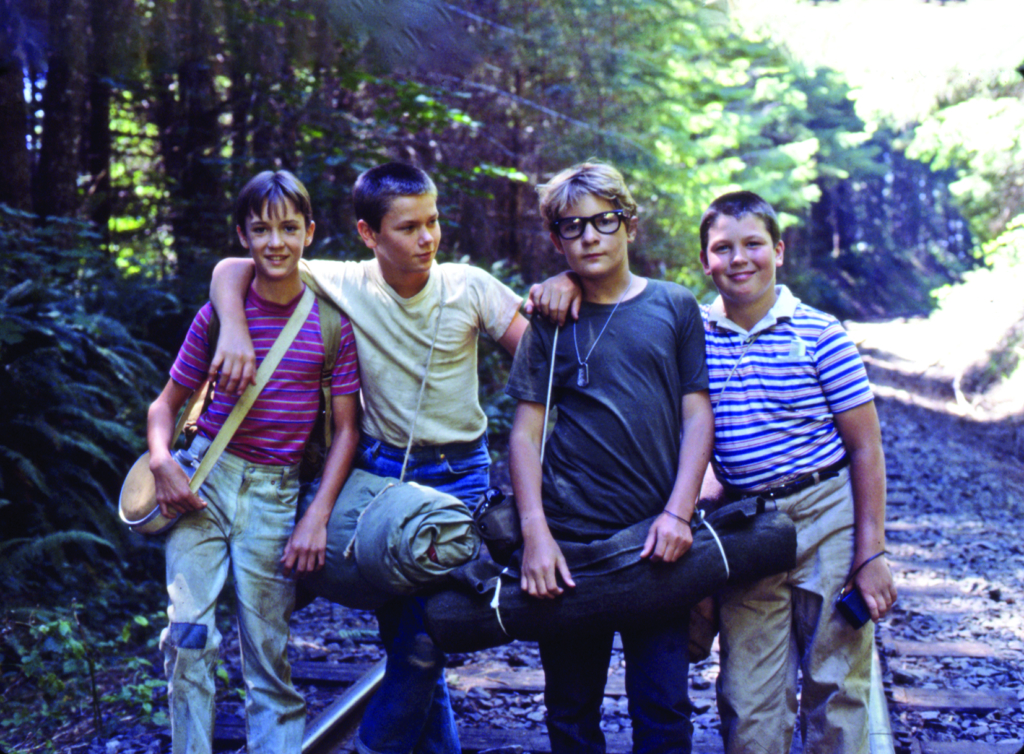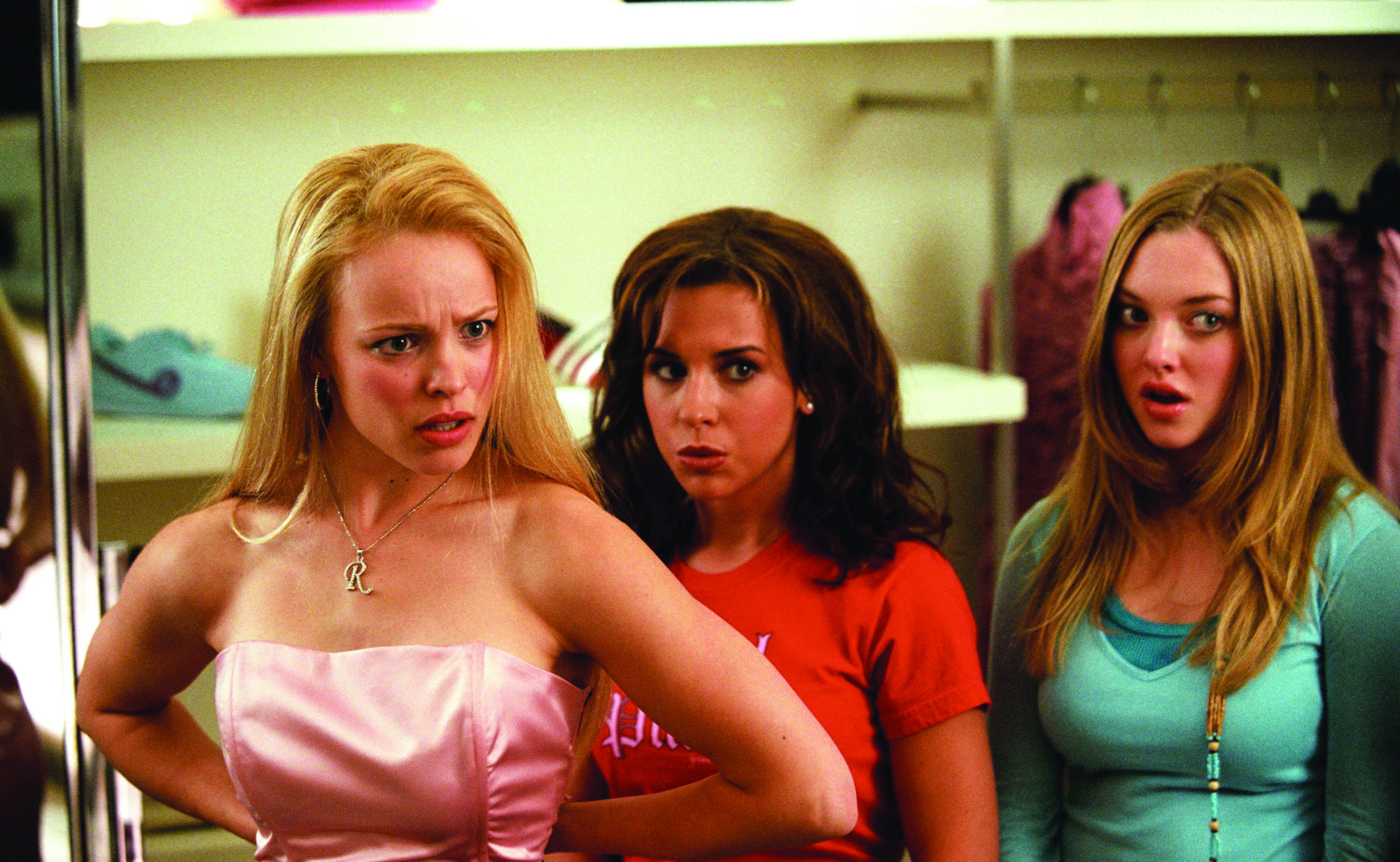I’m not surprised that my fifteen-year-old son’s favourite coming-of-age film is Stand by Me (Rob Reiner, 1986). Adapted from Stephen King’s 1982 novella The Body, it’s a beautifully delivered tale of adolescent friendship with the perfect mix of humour, drama, adventure and the kind of banter you’d expect from a bunch of pubescent boys. My own favourite film at that age was Little Darlings (Ronald F Maxwell, 1980), which is about two girls from opposite sides of the tracks, Angel (Kristy McNichol) and Ferris (Tatum O’Neal), away on summer camp and vying to lose their virginity first: one of them with a boy rather appropriately named Randy (Matt Dillon); the other with the adult camp leader (Armand Assante). Carrying the tagline ‘Don’t let the title fool you’, the film is an exploration of teen desire, rebellion, love and sex, but equally about competition culture and friendship. One thing these films have in common with today’s popular shows that hark back to that era is the absence of mobile phones, laptops or tablets. In fact, watching Stranger Things prompted my son to ask whether I thought it was better to be a teenager in the 1980s when I grew up than it would have been today with our current technology and social media. Good question, kid!

It took me back to the days when I was not long home from school and would stand in the hallway on my parents’ dial telephone, its cord stretched as far away as possible from their big ears and pinched in the door that I’d tried to close to have a little privacy with my best friend. How could we ever have imagined that – just a few decades on – technology would deliver our own teenagers to their friends face to face and in real time, from the sanctuary of their bedrooms, at any given time day or night, through a screen that would also serve as a television, games arcade, video camera and more? And yet, despite these advances in technology affording bountiful online platforms for connection, last year’s Young Australian Loneliness Survey found that one in six adolescents are experiencing poor mental health due to loneliness and isolation. Concerningly, once they are out of school, that rate doubles.[1]VicHealth, ‘The Young Australian Loneliness Survey: Understanding Loneliness in Adolescence and Young Adulthood – Research Summary’, 2019, p. 3,<https://www.vichealth.vic.gov.au/-/media/ResourceCentre/PublicationsandResources/Mental-health/Loneliness-research-summary.pdf?la=en&hash=C8DD8693DF98929CB6D6D2C423D3267D649D8334>, accessed 21 May 2020.
These statistics come as no surprise to me. Delivering in-school wellbeing workshops affords me the opportunity to hear firsthand about the struggles many young people face making and maintaining healthy and respectful friendships. With no shortage of on-screen friendship goals to aspire to, many young people feel their own experience falls well short of ideal. As the adage goes, ‘it’s quality, not quantity’, and in this digital age in which collecting friends on social media sometimes resembles a competitive sport, even some of the most popular and socially connected people report feeling extreme loneliness.

When booking my program, teachers often ask whether we deliver anti-cyberbullying workshops to specifically address the social media misuse they’ve identified between students whose friendship issues are being played out online. We do, of course, but the internet is just the tool, not the problem. The determining factor as to whether friendships are strong, healthy and successful – online or off – is our ability to communicate clearly and resolve conflict respectfully. A person who is not a bully offline is unlikely to be one online. As adolescents go through mental and physical transitions into adulthood, navigating the world and their own identity can be difficult enough, let alone dealing with peers in the same boat. It is crucial that we as educators, parents and carers set them up with the tools to identify and foster healthy friendships, and to help them build their emotional intelligence.
Making new connections
It is important for teenagers to acknowledge that friends come and go, and that not having friends now doesn’t mean they won’t down the track. In early childhood, kids are generally happy to be friends with anyone who will play a game or kick a ball with them; but, as they reach adolescence, they become more discerning about the people they choose to surround themselves with. This doesn’t mean they always make wise choices. It can take some time for teenagers to figure out that the most popular people aren’t necessarily the nicest. At a time when peer pressure peaks and one’s ability to fit in and conform correlates with ‘friendability’, this time in their lives can – depending upon their self-esteem, confidence and opportunities to socialise – leave many feeling unworthy, unloved and friendless.
One of the best things I ever did at school was to involve myself in theatrical productions, and settings like that – in which students can work towards a creative common goal with like-minded peers – are a great way for teenagers to expand their social circles. But opportunities like these exist in the online space, too. Provided cybersafety skills are being exercised and the identity of others can be legitimised, videogaming forums and social media platforms can provide a way to make new connections and begin friendships, especially for introverts and those with conditions and social anxieties that render eye contact and physical touch uncomfortable. Once identified, there’s no shortage of places to find new friends; maintaining them is where the real work begins!

Social hierarchies and cyberbullying
Parenting educator Rosalind Wiseman, whose non-fiction book exploring adolescent female friendships, Queen Bees & Wannabees, inspired the award-winning comedy film Mean Girls (Mark Waters, 2004), went on to write Masterminds & Wingmen, an equivalent book for and about teen boys and their friendships. According to Wiseman, there is little gendered difference in the way adolescents experience their social groups. For every ‘queen bee’ using relational aggression to keep her posse under control, there is an equivalent alpha-male ‘mastermind’ securing his place at the top of the ‘Man Box’.[2]Rosalind Wiseman, Masterminds & Wingmen, Harmony Books, New York, 2014, pp. 1–3. The reason Mean Girls was such a hit and continues to be a favourite with young people is that the characters and friend-group dynamics are so recognisable. With that in mind, once you add social media and instant messaging into the mix, you can safely say that navigating friendship today is no mean feat!
Being exposed to a vast array of personality types during adolescence can aid emotional development, providing opportunities to refine communication skills as teenagers become more independent and their relationships become more complex; but it’s important for young people to be able to identify relational aggression and how it’s used to undermine social status and friendships. The Australian Psychological Society notes that relational aggression can be quite covert and well hidden from parents and teachers, leaving some young people vulnerable to its devastating impacts.[3]‘Bullying’, Australian Psychological Society website, <https://www.psychology.org.au/for-the-public/Psychology-Topics/Bullying>, accessed 21 May 2020. Often executed through social media as cyberbullying, it can include:
• Exclusion: Deliberately leaving someone out of peer-group conversations and events in an attempt to isolate and embarrass them. Social exclusion can be especially hurtful for the target when it’s made obvious to others, such as through a viewable invitation list on social media.
• Gossip: Truths or untruths non-consensually shared with others, in the form of rumours using personal and private information. Those engaging in this kind of gossip often break the bonds of friendship and cause irreparable damage long before they realise that the attention they crave as an informant will be short-lived.
• The silent treatment: A passive-aggressive form of emotional abuse used to punish or control that disempowers the victim and often renders them frustrated and confused.
• Belittling: Snide and hurtful comments that make the victim feel ‘less than’. When the perpetrator is called out, they often gaslight the victim by claiming they were ‘only joking’ and that the victim is overreacting and being too emotional. This is also sometimes referred to as ‘roasting’, although roasting usually starts in jest and involves laughing with the subject, as opposed to at them.
• Conditional friendship: Where there are particular rules about conformity. This can be in relation to anything from carrying out initiation tasks and participating in bullying others to wearing the latest clothing trend.
The intention of all acts of relational aggression is to assert power and control over others and maintain a pecking order. In Mean Girls, Regina George (Rachel McAdams) and her clique of friends deliver examples of all of the above in the way they treat one another and others. Of course, not every falling-out between friends is related to such behaviour, but the question for many young people is how they can best resolve conflict when it occurs.

Communication strategies
Resolving conflict via text or online messaging is much harder than in person. In the absence of visual and auditory cues, there’s more room for misinterpretation and misunderstanding when we can’t hear tone, see facial expression or read body language. Despite the pitfalls, scenarios like this can also be a rewarding opportunity to refine online communication skills. Here are a few tips to pass on to teens learning to navigate virtual exchanges:
• Don’t expect a response straight away: Just because a message has been left unread for a while doesn’t mean it’s being ignored. Allow the receiver to absorb the message and consider a response in their own time, and vice versa.
• Check for psychological projection: Make sure you’re taking responsibility for your role in the situation, and that what you’re trying to say is clear and isn’t loaded with subtle aggression. It’s a well-known phenomenon that people behind a screen feel a little more brazen about speaking aggressively. Use ‘I’ phrases (‘I feel’; ‘I believe’), and be sure to check tone and choose words wisely before hitting send. Use emoticons to help express feelings.
• Choose the timing: No-one is likely to be in the best headspace at 3am!
• Get a second opinion: Ask a trusted adult to read over your messages and give constructive feedback.
• Don’t assume: If there’s uncertainty about anything, ask for clarification.
Trust is the glue that holds friendship together – it can take years to build, and, in many cases, seconds to destroy and a lifetime to repair. We’re united in our yearning for meaningful and deep relationships in which we are safe to immerse ourselves in vulnerability; where we can share our innermost thoughts, feelings and dreams; where someone has our back, and we have theirs; where we can love and laugh. That’s what good coming-of-age films remind us of: that real friendship is possible, and that maybe we had it too. At the end of Stand by Me, an older Gordon ‘Gordie’ Lachance (Richard Dreyfuss) types, ‘I never had any friends later on like the ones I had when I was twelve. Jesus, does anyone?’ How great it would be for our kids to be able to say, ‘Yes, we do.’
Endnotes
| 1 | VicHealth, ‘The Young Australian Loneliness Survey: Understanding Loneliness in Adolescence and Young Adulthood – Research Summary’, 2019, p. 3,<https://www.vichealth.vic.gov.au/-/media/ResourceCentre/PublicationsandResources/Mental-health/Loneliness-research-summary.pdf?la=en&hash=C8DD8693DF98929CB6D6D2C423D3267D649D8334>, accessed 21 May 2020. |
|---|---|
| 2 | Rosalind Wiseman, Masterminds & Wingmen, Harmony Books, New York, 2014, pp. 1–3. |
| 3 | ‘Bullying’, Australian Psychological Society website, <https://www.psychology.org.au/for-the-public/Psychology-Topics/Bullying>, accessed 21 May 2020. |




